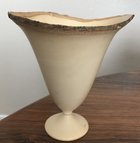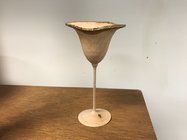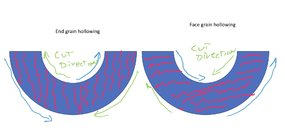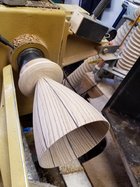I’m fairly new at turning and what I’ve read on this site is that one turns end grain bowl exterior before interior, yet when I watched Kent on “Turn a Wood Bowl,” he turned outside first. I’ve turned outside first also since I didn’t know the other option. Which way? Either?
He also said one HAD to use a tenon since with end grain a mortise will spread the wood fibers and not hold well—yet not knowing that, I’ve done large ones with a mortise, esp after reading Reed’s threads. Thoughts?
Lastly, he said it’s fine to use a spindle roughing gouge on the outside of end grain bowls—but not side grain. I’ve read never to use a spindle roughing gouge on any bowls. Is it really never?
So, I need some comments re those three issues. My guess is that there are many right ways to turn.
I meant to say interior before exterior at beginning.
He also said one HAD to use a tenon since with end grain a mortise will spread the wood fibers and not hold well—yet not knowing that, I’ve done large ones with a mortise, esp after reading Reed’s threads. Thoughts?
Lastly, he said it’s fine to use a spindle roughing gouge on the outside of end grain bowls—but not side grain. I’ve read never to use a spindle roughing gouge on any bowls. Is it really never?
So, I need some comments re those three issues. My guess is that there are many right ways to turn.
I meant to say interior before exterior at beginning.
Last edited:




